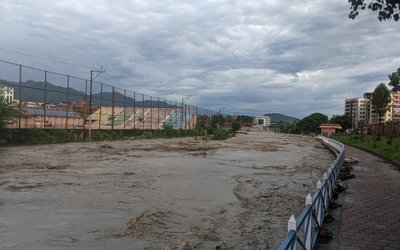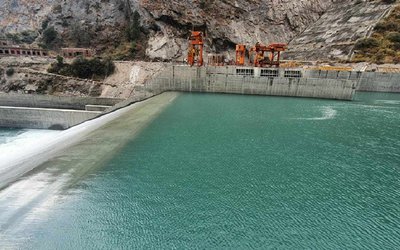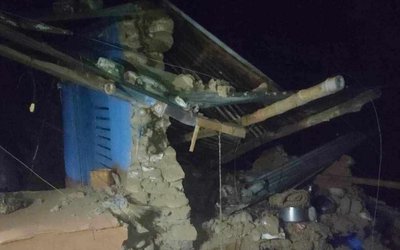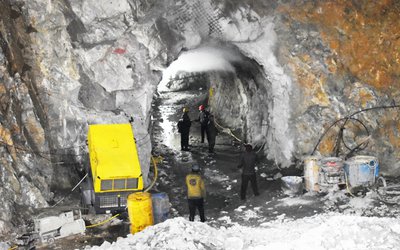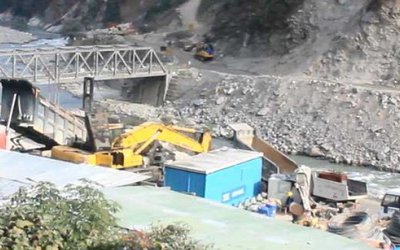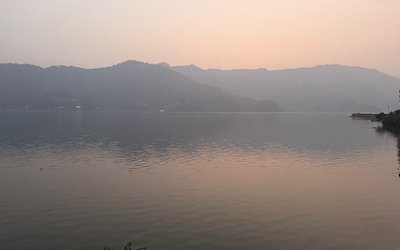Implementation without through scrutiny of large storage dam, like the 260 meters high Buri-Gandaki dam, which would going to be one of the world's highest dam, would be liable to have profoundly adverse economic as well as environmental impact on any country. Worst of all, the collapse of such large dam would be a total catastrophe for a economically weak country like Nepal.
In India the large storage dam projects, like the storage dam projects on Bhakra, Narvada, Tehri etc, have been built primarily for water supply to irrigate lands and other purposes. It would be quite unfortunate if we implemented the giant Buri-Gandaki Storage Dam Project or similar other projects exclusively for power generation turning a blind eye to non-power benefits .
Dam Safety First
Detailed feasibility study of the Kankai High Dam project had been conducted under then West German Government financial grant by renowned German consulting firm Salzgitter. The feasibility report was approved by German Government only after the design of the high dam was thoroughly checked by a panel of experts under a renowned French professor of engineering geology despite the fact that the height of the Kankai high dam is only about 80 meters.
Needless to say that the dam safety can not be compromised. In 1975 when a high dam collapsed in one of the Asian countries about 120 thousand people lost their life. In our own country Nepal, the Phewa dam in Pokhara had collapsed. Inadequate geological study was the cause of dam failure. Our Kulekhani dam was also on the verge of collapse just few years after the project came into operation.
Kulekhani High Dam
The Kulekhani high dam was in danger of being completely washed away just a few years after the completion of its construction. We can learn from it that even minor lapses in implementation of high dam projects could have disastrous consequences.
Government was about to take the decision to implement the Kulekhani high dam hydropower project. It was a time when a few years earlier the world was terribly shaken by two major high dams disaster. In December 1959 the Malpasset Dam built in France had collapsed. Similarly, in 1963 in Italy the Vaiont Dam disaster was accompanied with a 200 feet high wall of water sweeping into downstream villages, wiping out everything in its path. Both disasters were consequent upon poor geology. I had published in our daily newspaper “ The Rising Nepal” an article explaining that the geology of the Kulekhani area could be problematic.
World Bank also Concerned
Publication of my article to my great astonishment was met by a storm of widespread criticism. Even the newspaper like “Times of India” had reported that our government establishments as well as the World Bank authorities in Washington were terribly concerned about the issue raised in my article. Government had even published a statement to repudiate my viewpoint on geology of Kulekhani. Government too had good reason to be confident about the correctness of its statement because the investigation works as well as the design of that project was done by one of the world’s leading consulting firm.
Dr. Cooper's Reporting
All of a sudden our country was shocked by the news that the Kulekhani high dam might be on the brink of collapse just few years after the completion of the project construction. Canadian Water Resources expert Dr. John Cooper had reported after his visit to the project site that deep cracks threatening to be extremely dangerous for the safety of the high dam had already developed over a large area just upstream dam around the intake structures. It was feared that a large mass of the right bank would slide and plunge into the reservoir triggering the giant waves overtopping the dam. It became obvious that the Kulekhani dam could collapse if prompt action is not taken to complete the necessary engineering works in time before the onset of the coming monsoon season to prevent the dam failure. A similar type of rock sliding into the reservoir had resulted in 1963 Vaiont Dam disaster in Italy.
Emergency Construction
Implementation of extensive civil engineering works in a very short period based on the recommendation of a hastily constituted panel of top geotechnical experts from four different countries, viz the USA, Canada, Australia and Japan helped to prevent the disaster that could have resulted in many thousands of deaths apart from plunging the entire country into economic despair. How the Kulekhani dam was on the brink of collapse must serve as a lesson to our policy makers and planners.
Any one visiting the Kulekhani dam site can even now see the extensive works carried out within a very short period at high cost to prevent the dam failure. The intake and its surroundings have been anchored by long cables to prevent them from sliding into the reservoir. Large areas have been cleared of loose overburdens. Special drainage tunnels have been provided to prevent the landslides.
Risk of Orville Dam Failure
In February 2017 the news of Risk of Orville Dam failure had been covered by media all over the world. The Oroville Dam is an earthfill embankment dam on the Feather River in the state California of the USA. This dam is 235 meters high. It is the tallest dam in the US. The storage capacity of the reservoir is 4.4 cubic kilometers. This dam in comparison with the proposed Burhi-Gandaki dam is smaller in height and similarly the Orville reservoir is also smaller in volume compared to such volume of the proposed Burhi-Gandaki reservoir.
The Orville dam serves mainly for water supply , hydroelectricity generation and flood control. It is interesting to note that this dam has provided flood control benefit exceeding US $ 1.3 billion between the years of 1987 and 1999.
Mandatory Evacuation
The main spillway of the Orville Dam was damaged after heavy rains and an anticipated failure of the dam resulted in mandatory immediate mass evacuation of people numbering about 200,000 living in the river basin downstream the dam. All those people had to flee to safety at a very short notice leaving everything behind. Evacuation order was partially lifted only after four days. People wishing to come back to their homes were at their own risk allowed to return back only after the danger of dam failure had started to recede
It is reported in media that underestimation of the maximum flood discharge and lack of proper repair and maintenance of the dam was the cause of the dam damage.
Burhi-Gandaki High Dam Safety
Nepal is looking forward to implement in near future very ambitious 260 meters high Burhi-Ga ndaki double curvature arch dam hydropower project based on design of French engineers to resolve our energy supply problem. This dam is exactly similar in design to the 60 meters high Malpasset dam, which had been built in France and collapsed in December 1959 just few years after the completion of the construction.
The proposed Burhi-Gandaki dam will be in one of the most seismically active areas of the world. The dam site is very close to the epicenter of very recent Gorkha earthquake measured 7.9 in Richter scale. This type of dams are highly sensitive to earthquakes. Every one knows that the proposed Burhi-Gandaki dam is located in an area prone to big landslides, which frequently block the river resulting in impoundment of entire river flow. Needless to say that absolute certainty of suitability of geological condition is a prerequisite for selection of the proposed double curvature arch dam. It is obvious that due to enormity of the volume of storage reservoir the scale of the collateral damages would be too big if this dam collapsed.
A Panel of Experts
The Burhi-Gandaki project, which would be impounding a vast reservoir of about five cubic kilometers, would prove to be dreadful curse to our country if the dam collapsed. Thus it is absolutely necessary that our government should constitute a panel of internationally renowned experts to review rigorously all aspects of Burhi-Gandaki project dam design to ensure that it is safe to build the proposed dam before taking final decision to implement this technically ambitious high dam project.

Dr. A.B. Thapa
Thapa writes on water resources issue
- Dudhkosi Multipurpose Project
- Jul 11, 2022
- Dudh-Kosi Power Project And Kosi Treaty
- Sep 27, 2021
- Uttarakhand Glaciers And Recent Disaster: A Lesson To Our Country
- Mar 02, 2021
- Multipurpose Langtang After Melamchi: Inter-Basin Water Transfer
- Nov 04, 2020
- Large Storage Dams Projects Wary of Giving Away Children’s Inheritance
- Dec 22, 2019
